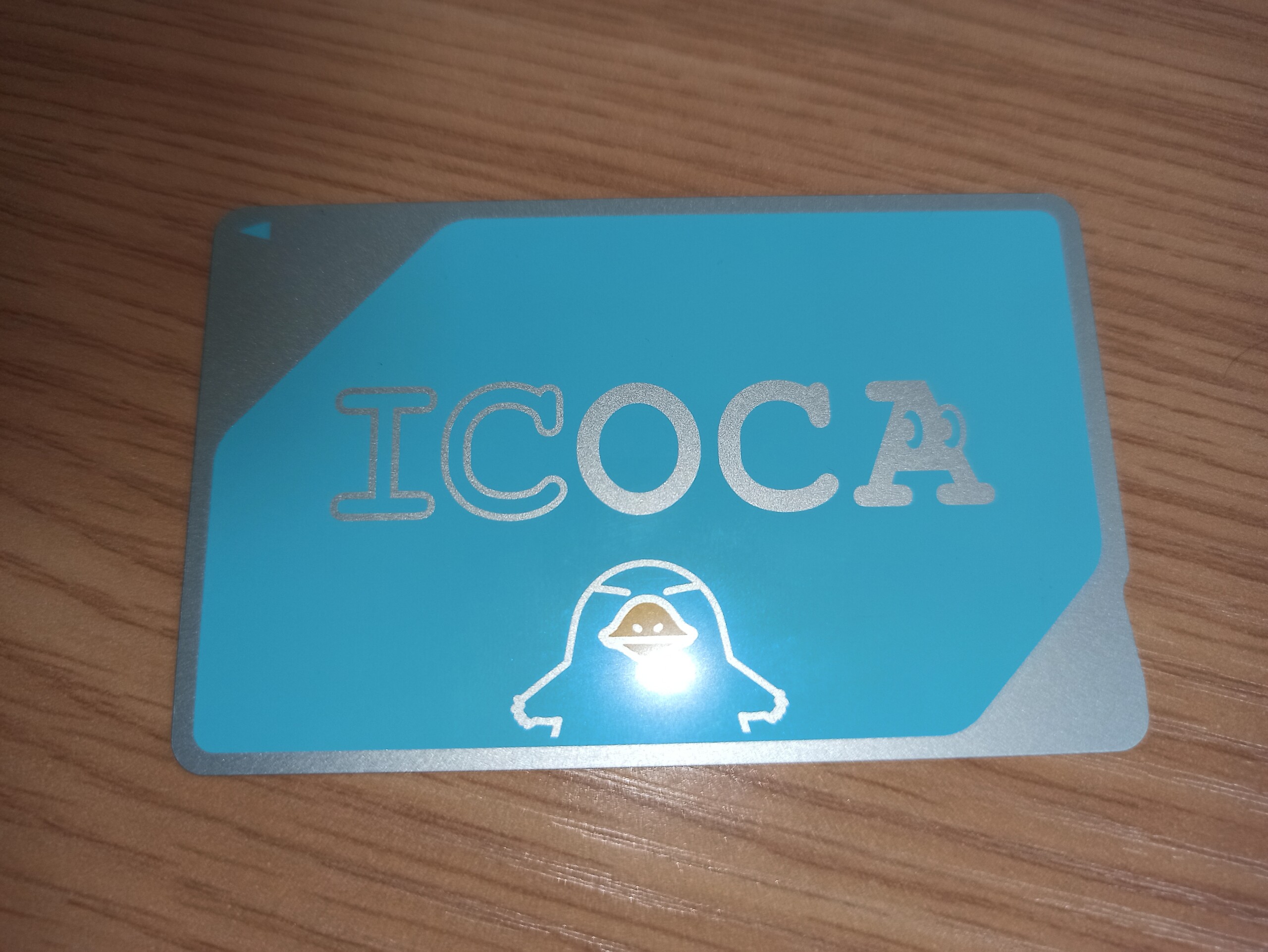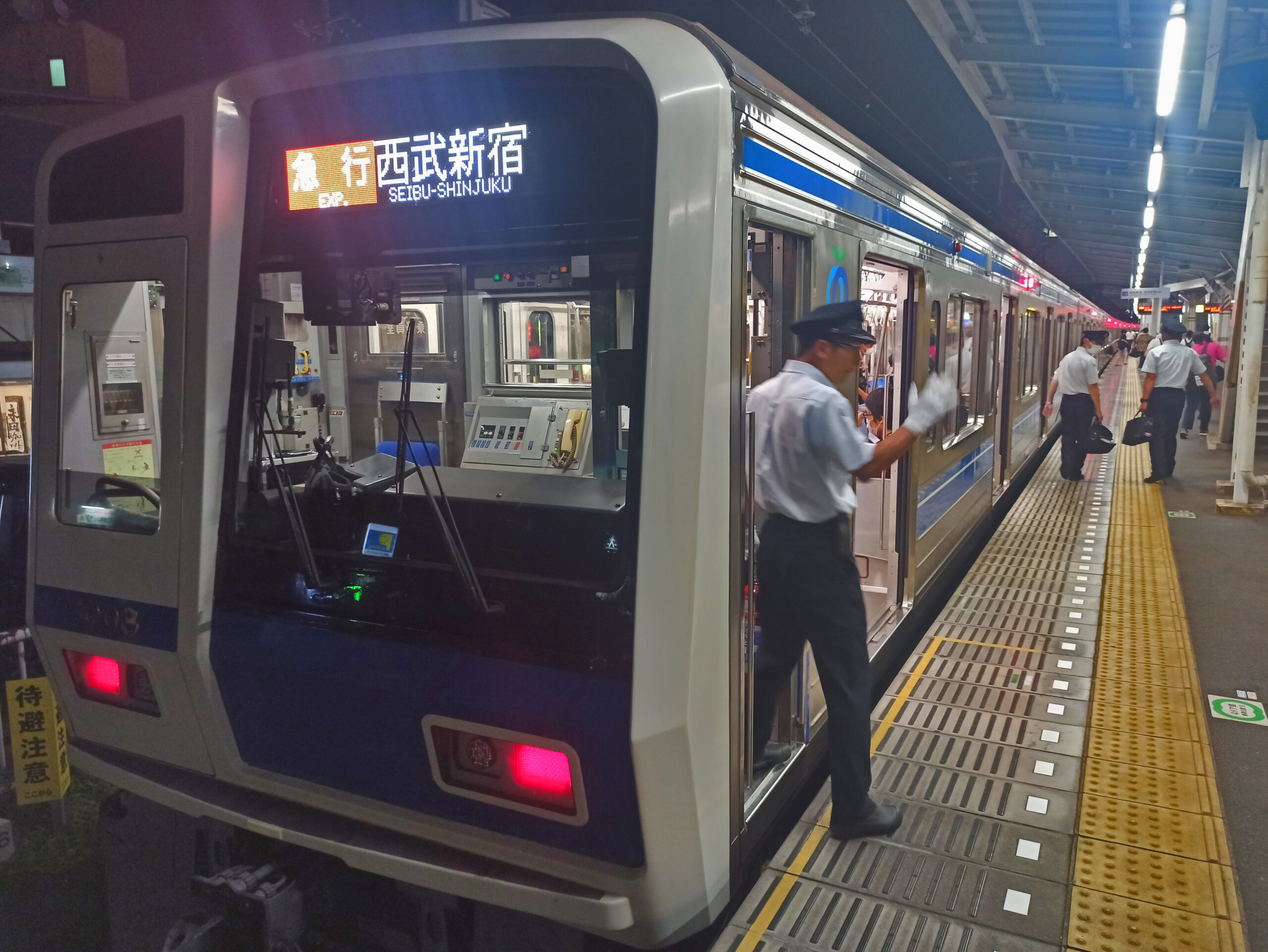If you’re in the Tokyo area, and are carrying an IC card, I’ve got a Tokyo rail travel hack for you. (I mention Tokyo because I am most familiar with it. This hack may exist in other Japanese cities.)
Firstly, if you’re not sure what an IC card is, I will help out. IC cards are the prepaid — and rechargeable — contactless cards found throughout Japan. They’re valid on trains, buses, convenience stores, and some quick-service restaurants. Think London’s Oyster card, and Hong Kong’s Octopus card.
East Japan Railway (JR East) controls many of the rail lines in the Tokyo area; their IC card is the Suica. Pasmo was introduced years later, to be used by non-JR rail lines. These days, in Tokyo one can be easily used in place of the other.

Pictured above is my Icoca card. That one is issued by West Japan Railway (JR West); think Kanazawa, Osaka, and Kyoto. It can be used in the Tokyo metropolitan area, but cannot be obtained in Tokyo. Similarly, Suica and Pasmo cannot be obtained in Osaka or Kyoto.
IC cards from throughout the country can be used around Tokyo, too. In the same vein, you can also use Suica and Pasmo in other Japanese cities. There are exceptions — Japanese rail companies make strange bedfellows — but that’s a horse of another color.
Let’s move on to the Tokyo rail travel hack.

Seibu (西武) is the Tokyo-area rail company that makes this Tokyo rail travel hack possible. If the name rings a bell, that’s because Seibu also operates department stores, and owns a baseball team called the Seibu Lions.
Seibu does have stops in major tourist spots such as Shinjuku, Ikebukuro, and Kawagoe city in Saitama prefecture, but it’s mostly for commuters.
Nevertheless, they’re a big help when you want to add value to your IC card. JR (Japan Rail) stations typically require a minimum of ¥500 or ¥1000 to top-up. This is made even more puzzling when you try to pass through a ticket gate with insufficient funds on your IC card, since you’re required to add a nonstandard amount anyway.
And how about Seibu stations? What’s the minimum value allowed?
I made a video to help you navigate through this travel hack:

All of these cards can be added on the Apple Wallet – no need for physical cards any more.
I appreciate your message, but I’m one of those who refuses Apple products. It’s no big thing adding tangible cash to these IC cards.
I don’t want to overuse my phone. I use it for telephone calls, texts, Instagram, and moderate on-the-go internet use and some map use. I don’t want to use it for payment and I don’t want it constantly on a map app while driving. That’s why I would use an IC card if in Japan.
To add to this article: the video mentions that Seibu cards can have a low amount added, not 500 yen. I think the video say 10 is the minimum. So get that card and you can avoid a lot of unused value remaining on the card when you leave. In Taiwan, at least on the Taipei Metro, you can add any amount. I left NTD5 on my Easy Card, an IC card, which is about US15 cents.
Hi Derek, I appreciate your comments.
In the video, I mentioned that you can add as little as 10 (y)en. However, the ticket gate might stop you since no train ride is that cheap. There are of course, those machines that let you top up the difference before exiting stations; they’re called “seisanki” (精算機).
OTOH, I could have used 10 yen on my IC card earlier today to buy a couple of plastic bags at the convenience store. No fuss.
Only thing I wish they would do is let me charge the IC card with a credit card.
No issues using cash, but I’d rather save my bills for cash only places when I can and CC should get me the travel category bonus on CSP/Bilt, etc.
I appreciate your comment, Jinxed_K. Hmm, I’m curious about the credit card method. Next year, I believe the Tokyo area will start allowing some credit cards to be used at the ticket gates. Until then, have you tried asking a stationmaster to charge your IC card with a credit card? It may not work, and it’s no efficient, but it’s a start.